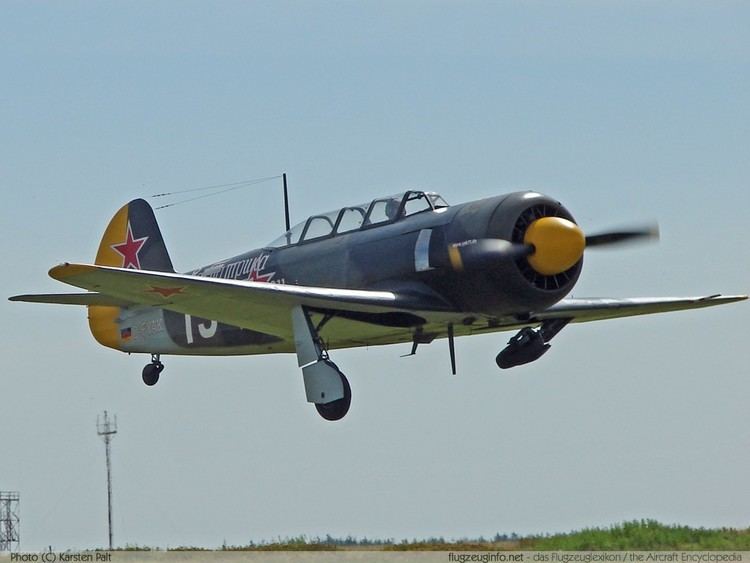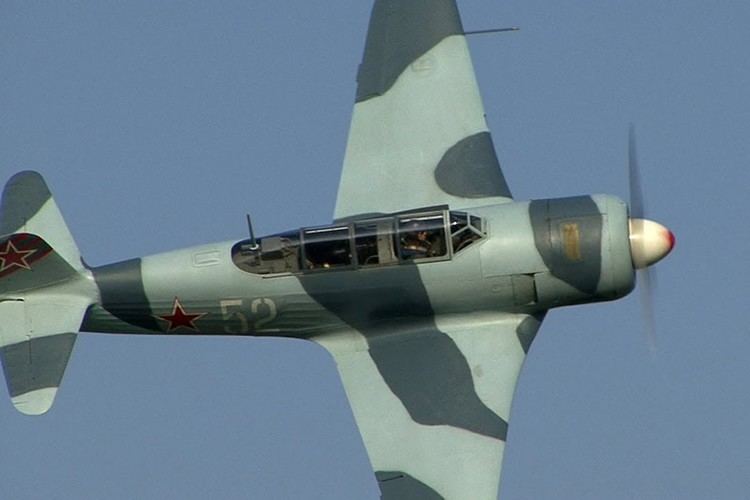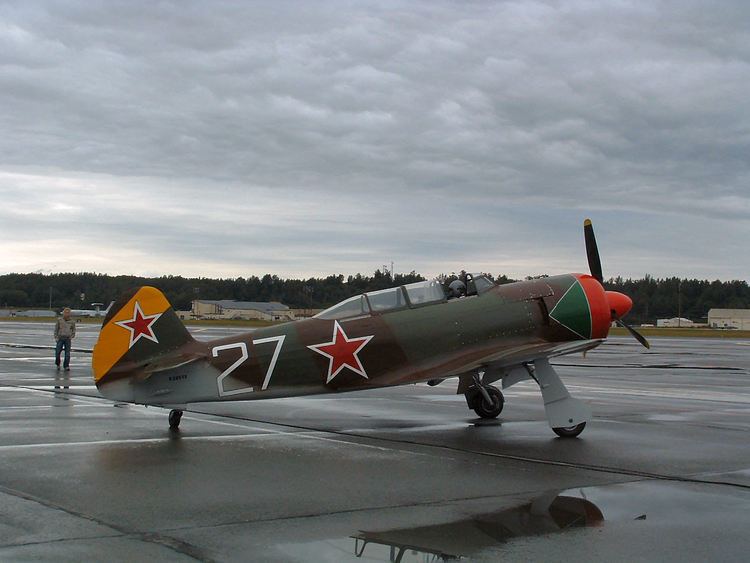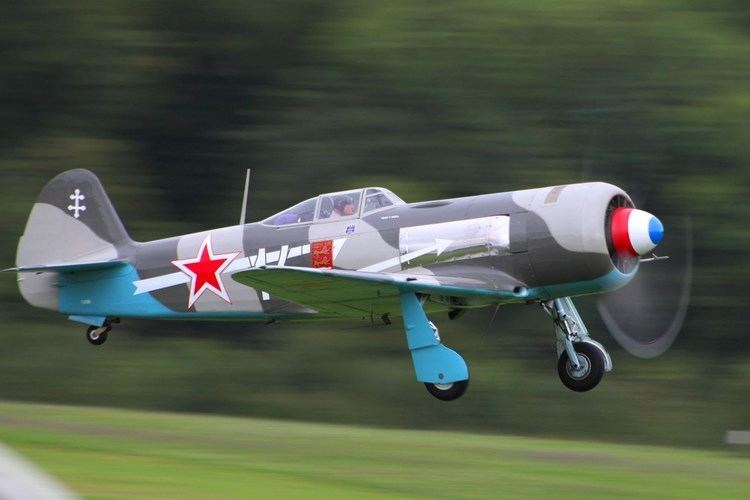Top speed 460 km/h Wingspan 9.4 m Length 8.2 m First flight November 10, 1945 | Range 1,250 km Cruise speed 370 km/h | |
 | ||
Yakovlev yak 11 flying demo at hahnweide vintage air show 2011
The Yakovlev Yak-11 (Russian: Яковлев Як-11; NATO reporting name: "Moose") is a trainer aircraft used by the Soviet Air Force and other Soviet-influenced air forces from 1947 until 1962.
Contents
- Yakovlev yak 11 flying demo at hahnweide vintage air show 2011
- History
- Yak 11U
- Operational history
- Survivors
- Operators
- Description
- Specifications Yak 11
- References

History
The Yakovlev design bureau began work on an advanced trainer based on the successful Yak-3 fighter in mid-1944, although the trainer was of low priority owing to the ongoing Second World War. The first prototype of the new trainer, designated Yak-UTI or Yak-3UTI flew in late 1945. It was based on the radial-powered Yak-3U, but with the new Shvetsov ASh-21 seven-cylinder radial replacing the ASh-82 of the Yak-3U. It used the same all-metal wings as the Yak-3U, with a fuselage of mixed metal and wood construction. The pilot and observer sat in tandem under a long canopy with separate sliding hoods. A single synchronised UBS 12.7 mm machine gun and wing racks for two 100 kg (220 lb) bombs comprised the aircraft's armament.

An improved prototype flew in 1946, with revised cockpits and a modified engine installation with the engine mounted on shock absorbing mounts. This aircraft successfully passed state testing in October 1946, with production beginning at factories in Saratov and Leningrad in 1947.

Production Yak-11s were heavier than the prototypes, with later batches fitted with non-retractable tailwheels and revised propellers. A 7.62 mm ShKAS machine gun was sometimes fitted instead of the UBS, while some were fitted with rear-view periscopes above the windscreen. In total, Soviet production amounted to 3,859 aircraft between 1947 and 1955. with a further 707 licence-built by Let in Czechoslovakia as the C-11.
The Yak-11 set five world-class records.
Yak-11U

In 1951, Yakovlev revised the design of the Yak-11, adding a retractable tricycle landing gear, with two variants proposed, the Yak-11U basic trainer and Yak-11T proficiency trainer, which carried similar equipment to contemporary jet fighters. The new aircraft had reduced fuel capacity and was unsuitable for operations on rough or snow-covered runways, and so was rejected for Soviet service, although a few examples were built in Czechoslovakia as the C-11U.
Operational history
The Yak-11 entered service in 1947, serving as a standard advanced trainer with the Soviet Air Forces and DOSAAF. Both the Yak-11 and C-11 were used in all Warsaw Pact countries and were exported to eighteen countries, including many African, Middle Eastern and Asian countries.
North Korean Yak-11s were used in combat in the Korean War, with one Yak-11 being the first North Korean aircraft shot down by US forces when it was shot down by a North American F-82 Twin Mustang over Kimpo Airfield on 27 June 1950. East Germany used the Yak-11 to intercept American reconnaissance balloons.
Survivors
Due to its Yak-3 lineage, the Yak-11 has recently seen widespread popularity among warbird enthusiasts. Highly modified versions of the Yak-11 can be frequently seen at air races. About 120 Yak-11s remain in airworthy condition.
Operators
Description
Mixed construction (metal and wood) trainer aircraft. Seven-cylinder radial engine with two-blade fixed propeller. Conventional retractable landing gear with fixed tailwheel.
Specifications (Yak-11)
General characteristics
Performance
Armament
